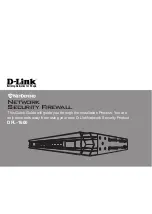
243
Configuration procedure
Follow these steps to configure an SSL server policy:
To do...
Use the command...
Remarks
Enter system view
system-view
—
Create an SSL server policy and
enter its view
ssl server-policy
policy-name
Required
Specify a PKI domain for the SSL
server policy
pki-domain
domain-name
Required
By default, no PKI domain is
specified for an SSL server policy.
Specify the cipher suite(s) for the
SSL server policy to support
ciphersuite
[
rsa_3des_ede_cbc_sha
|
rsa_aes_128_cbc_sha
|
rsa_aes_256_cbc_sha
|
rsa_des_cbc_sha
|
rsa_rc4_128_md5
|
rsa_rc4_128_sha
]
*
Optional
By default, an SSL server policy
supports all cipher suites.
Set the handshake timeout time
for the SSL server
handshake timeout
time
Optional
3,600 seconds by default
Set the SSL connection close
mode
close-mode wait
Optional
Not wait by default
Set the maximum number of
cached sessions and the caching
timeout time
session
{
cachesize
size
|
timeout
time
} *
Optional
The defaults are as follows:
500 for the maximum number
of cached sessions,
3600 seconds for the caching
timeout time.
Enable certificate-based SSL client
authentication
client-verify enable
Optional
Not enabled by default
NOTE:
If you enable client authentication here, you must request a local certificate for the client.
SSL mainly comes in these versions: SSL 2.0, SSL 3.0, and TLS 1.0, where TLS 1.0 corresponds to SSL 3.1. When
the device acts as an SSL server, it can communicate with clients running SSL 3.0 or TLS 1.0, and can identify
Hello packets from clients running SSL 2.0. If a client running SSL 2.0 also supports SSL 3.0 or TLS 1.0
(information about supported versions is carried in the packet that the client sends to the server), the server will
notify the client to use SSL 3.0 or TLS 1.0 to communicate with the server.
SSL server policy configuration example
Network requirements
As shown in
, users can access and control the device through web pages. For security of the
device, users must use HTTPS (HTTP Secure, which uses SSL) to log in to the web interface of the device
and use SSL for identity authentication to ensure that data will not be eavesdropped or tampered with.
To achieve the goal, perform the following configurations:
















































